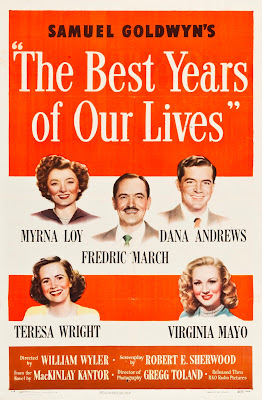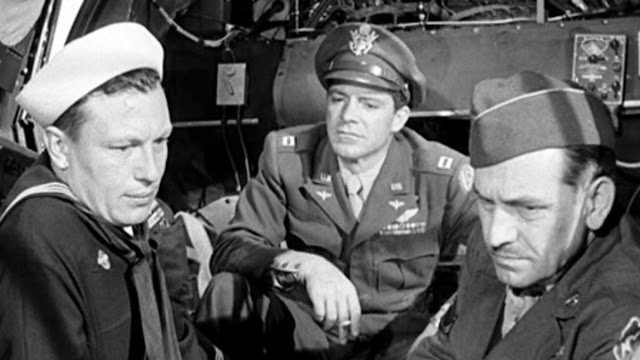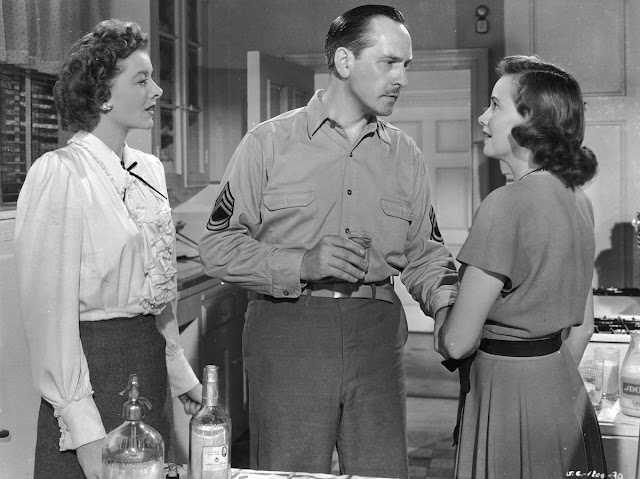The first story follows Homer, a vet who lost both of his hands and is returning home to his promised girl and his family. He has hooks on the ends of both arms now and can adroitly use them for almost any task including lighting cigarettes and cleaning and shooting his gun. He has difficulty dealing with how others struggle to know how to act around him. He's played by a veteran that faced the same situation and who won two Oscars for this role. He's compelling in his emotional ups and downs as he manages his own expectations with those of others and can't seem to face opening up.
Another story follow Al, a wealthy banker returning to his wife, his adult daughter Peggy and his son. Peggy and her mother are great characters with patience to step in and roll with the punches of Al's awkwardness, even as some of his behavior, like his drinking, is a little troubling. Those actresses, Myrna Loy and Theresa Wright, give my two favorite performances here. They add a great dynamic on screen, communicating the reality of what the citizens at home went through and how they adapted during the war. Those that stayed home are very much a part of this story as they have to learn to adjust to their returning loved ones. Indeed, there are examples of both citizens and veterans in dealing with their struggles in positive and negative ways.
The final veteran is Fred Darry, whose family lives under the tracks in a poor part of town. His wife has moved into her own apartment and created a life working at a club and enjoying the nightlife. They barely knew each other before, having gotten married less than two weeks before he went off to war, and have to get reacquainted now. She doesn't understand why he doesn't want to wear his uniform out on the town and he seems oblivious to her many male acquaintances. Fred gets entangled with Peggy, Al's daughter. The instant connection and unrequited love between Peggy and Fred is one of the great loves on film. Their connection was immediate and electric and troubled by his existing marriage and their dedication to propriety.

The Best Years of Our Lives depicts the great classic American hometown while at the same time the real cracks in the pavement that the servicemen face when coming home to a world that may not be quite ready for them, and them for it. Whether its a moral conundrum at work, a penchant to resort to a drink when things are hard, self-doubt, PTSD (before it was a thing people knew about), being in over your head and facing complications in love, all of these characters are experiencing problems that still happen every day.
The solutions for these problems don't always work themselves out easily, and yet it is a film with a lot of hope. The biggest surprise of this film to me was how honest communication and openness are what lead to learning and growth in every case. As the characters avoid talking and addressing their problems they get worse but as they confront them in difficult conversations and circumstances, they are able to take steps forward. I loved the value it placed on turning to others and sharing your issues rather than hiding them. At the time this was a bit of a radical idea, and one that could've been really instrumental to people that were struggling with these issues and saw themselves in the characters on the screen. It certainly did some of that for me.


